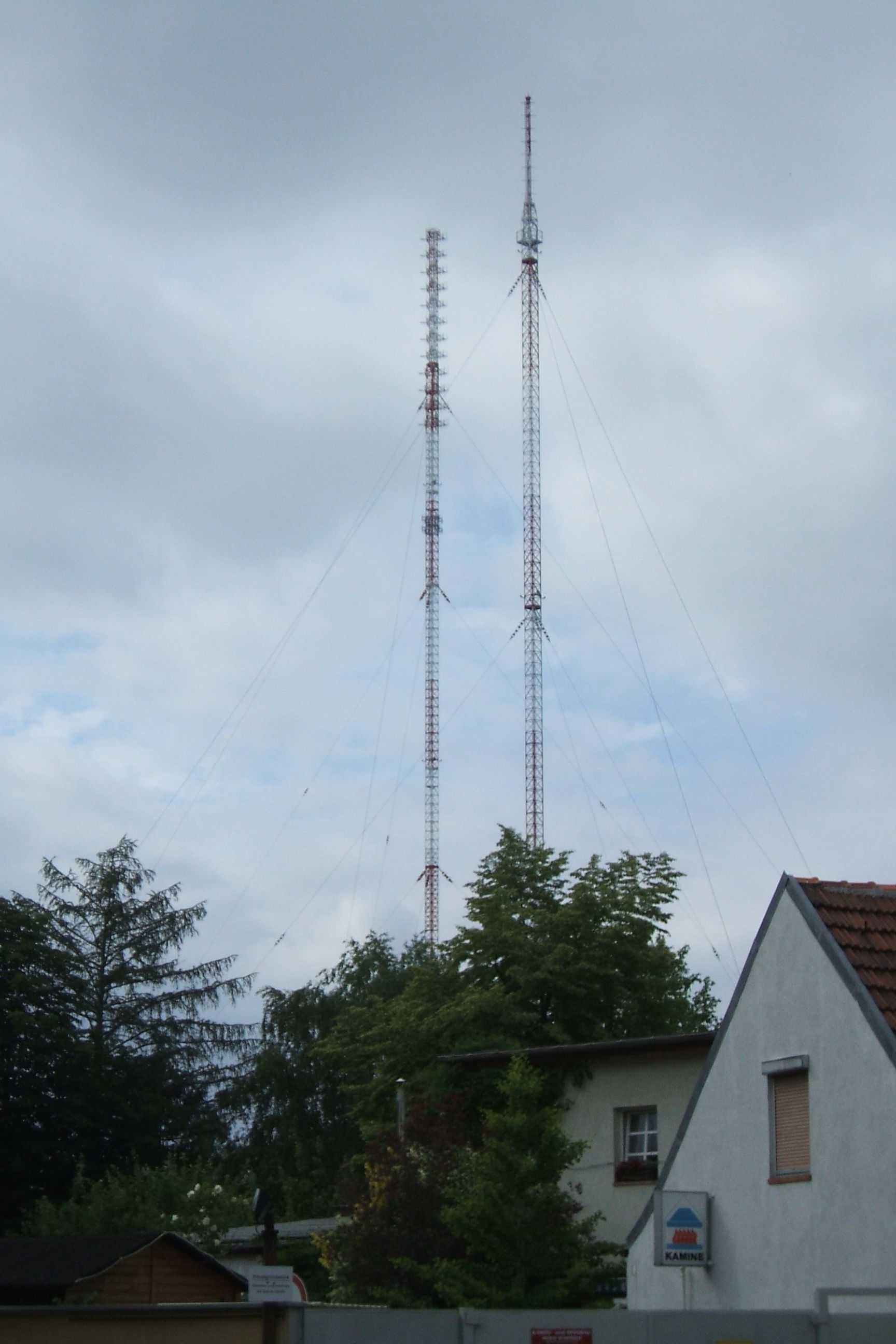Berlin-Britz transmitter on:
[Wikipedia]
[Google]
[Amazon]
 Transmitter Berlin-Britz was a
Transmitter Berlin-Britz was a
 Transmitter Berlin-Britz was a
Transmitter Berlin-Britz was a broadcasting
Broadcasting is the distribution of audio or video content to a dispersed audience via any electronic mass communications medium, but typically one using the electromagnetic spectrum (radio waves), in a one-to-many model. Broadcasting began ...
facility for medium wave
Medium wave (MW) is the part of the medium frequency (MF) radio band used mainly for AM radio broadcasting. The spectrum provides about 120 channels with more limited sound quality than FM stations on the FM broadcast band. During the dayt ...
, shortwave
Shortwave radio is radio transmission using shortwave (SW) radio frequencies. There is no official definition of the band, but the range always includes all of the high frequency band (HF), which extends from 3 to 30 MHz (100 to 10 m ...
and FM on the site of a former tree nursery in Berlin-Britz
Britz () is a German locality (''Ortsteil'') within the Berlin borough (''Bezirk'') of Neukölln.
History
The village of ''Britzig'' was first mentioned in 1273. It was incorporated by the 1920 Greater Berlin Act. It is known for being the site ...
. It was established in 1946 and until 1993 it was the most important transmitter of RIAS. It was used by Deutschlandradio
Deutschlandradio (DLR) (''Radio Germany'') is a national German public radio broadcaster.
History
''Deutschlandfunk'' was originally a West German news radio targeting listeners within West Germany as well as in neighbouring countries, ''Deuts ...
until 4 September 2013.
The Berlin-Britz transmitter initially used a wire supported between two tall wooden poles. This aerial was replaced in 1947 by a guyed insulated steel framework mast. This mast was replaced in turn in 1948 by two guyed insulated steel framework masts, each with a height of and which still exist today. These masts were extended in subsequent years so that today they are and tall and carry FM radio broadcasting antennas.
Since 1949 the Berlin-Britz transmitter has also been a shortwave transmission facility. A dipole aerial aligned in east–west direction was installed. A second shortwave broadcasting aerial in the form of a dipole with whole length was built in 1983.
A cross dipole aerial for the medium wave
Medium wave (MW) is the part of the medium frequency (MF) radio band used mainly for AM radio broadcasting. The spectrum provides about 120 channels with more limited sound quality than FM stations on the FM broadcast band. During the dayt ...
frequency 990 kHz was built in 1978 to provide better coverage to the former East Germany
East Germany, officially the German Democratic Republic (GDR; german: Deutsche Demokratische Republik, , DDR, ), was a country that existed from its creation on 7 October 1949 until its dissolution on 3 October 1990. In these years the state ...
for RIAS’ first channel. This aerial for circular polarization radiated vertically in the ionosphere and permitted good reception of RIAS 1 in the entire former East Germany. This aerial was mounted on five guyed masts each with a height of and was shut down at the end of 1995.
See also
*List of masts
The tallest structure in the world is the Burj Khalifa skyscraper at . Listed are guyed masts (such as telecommunication masts), self-supporting towers (such as the CN Tower), skyscrapers (such as the Willis Tower), oil platforms, electricity ...
External links
* * * http://www.skyscraperpage.com/diagrams/?b45609 * http://www.skyscraperpage.com/diagrams/?b45610 Radio masts and towers in Germany Buildings and structures in Berlin 1946 establishments in Germany Towers completed in 1946 {{Berlin-struct-stub